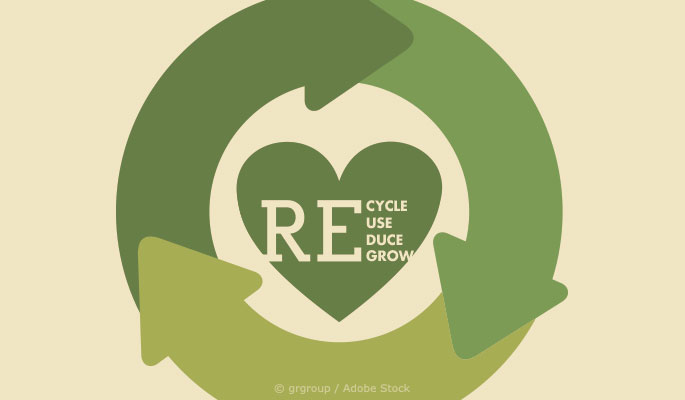
Economical systems are administered by governments and energized by industry, but we drive them. Therefore, we hold the key to change. Our consumption-based economy has proven it cannot deliver the sustainable future we desire for our children. A circular economy is one which can.
A circular economy reduces extraction and consumption of raw materials by using waste as a primary resource, allowing society to live within the means of our finite planet.
To get there, it requires everyone to make a small effort. Combined effort can have a huge impact. Here are four ways you can help society move towards a circular economy:
1) Utilize recycling bins and programs
Comprehensive recycling systems are provided and supported by governments. The more we use it, the more feasible it becomes and the more likely government will ramp up recycling programs.
2) Practice your own recycling and reusing
By recycling, repairing and reusing your own items, there is less demand for new items. If enough people do this, it will help transition to an economy which is not so focused on mass production of ‘one off’ use items.
3) Shop wisely
Use your buyer influence to show that we do not support the current linear economic system. Avoid ‘one off’ use items, and try to stick to items made out of recycled materials or those which have an option to be recycled.
4) Grow your own food
Fresh produce is often transported, packaged and sold in plastic. By growing fresh vegetables yourself, it removes potential waste involved with these processes. If you can’t grow your own, next time you’re buying vegetables bring a basket to avoid plastic bags.
These are just some of the ways in which we can help. The more we embrace recycling principles, the stronger the signal we give government and industry that a circular economy is the way of the future.




































































































































 Three Ways to Engage Teams and Clients to Maximize Your Recycling Program Engagement
Three Ways to Engage Teams and Clients to Maximize Your Recycling Program Engagement  How to Integrate Accessibility Into Your Sustainability Planning
How to Integrate Accessibility Into Your Sustainability Planning  Why Park Benches Can Promote Workplace Well-Being
Why Park Benches Can Promote Workplace Well-Being 

Pingback: What is a Circular Economy? | Spring Power & Gas